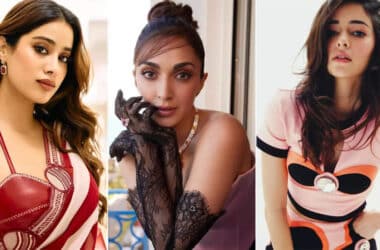In recent years, the fashion industry has embraced technology in a variety of ways, but one of the most exciting developments is the rise of swap fashion models. Powered by AI technology, these virtual models are redefining how brands showcase their clothing, connect with customers, and execute digital marketing campaigns. The ability to swap and customize virtual fashion models is revolutionizing the way fashion is marketed and sold, offering limitless possibilities for creativity, efficiency, and inclusivity.
What Are Swap Fashion Models?
Swap fashion models are AI-generated virtual avatars created to represent various body types, ethnicities, and genders. Unlike traditional models, these digital creations exist purely in virtual spaces, allowing brands to experiment with different looks, clothing styles, and campaigns without the need for real-life models or photoshoots.
By using generative AI models, fashion brands can create realistic digital models that appear lifelike, changing outfits, poses, and facial expressions to suit the needs of the brand’s campaigns. Whether it’s AI-generated female models, AI-generated bikini models, or high-fashion avatars, these models can be quickly swapped and customized to meet specific demands.
How Do Swap Fashion Models Work?
The technology behind swap fashion models relies on sophisticated AI algorithms and model swap technology. Here’s how it works:
- AI Model Creation: Brands use AI-powered platforms to generate realistic virtual models. These models are often based on real human characteristics, but can be adjusted to reflect various body types, skin tones, and facial features.
- Model Customization: Once the model is created, it can be customized with different outfits, hairstyles, and accessories, giving brands complete control over the look of their virtual model. This customization is easy to update, making it possible to create new looks in real-time.
- Instant Model Swapping: Model swap AI allows fashion brands to quickly switch models, outfits, or accessories without the need for physical photoshoots. This creates greater flexibility in digital marketing campaigns, where different models can be swapped in seconds.
- Integration Across Platforms: Once the model is created and customized, it can be used across various platforms, from e-commerce websites to social media channels and virtual fashion shows. These models can even be featured in AI face swap technology to try different facial expressions and poses, making them more engaging for customers.
Benefits of Swap Fashion Models in Fashion Marketing
Cost-Efficiency
Traditional fashion photoshoots can be expensive, requiring models, photographers, stylists, and production teams. With swap fashion models, these costs are eliminated. Virtual models can be created once and reused in multiple campaigns, significantly reducing the cost of content creation.
Additionally, virtual models can be swapped for different looks and settings in a matter of seconds, eliminating the need for scheduling and logistics, making it easier to run time-sensitive campaigns.
Greater Flexibility and Customization
One of the key benefits of using swap fashion models is the unparalleled flexibility they offer. Brands can instantly create a variety of looks without worrying about the availability or constraints of human models.
Fashion companies can customize these models in any way they choose, adjusting body types, facial features, and clothing to perfectly match the brand’s target audience. This customization allows for the representation of diverse body types, ethnicities, and ages, ensuring inclusivity in fashion marketing.
Inclusivity and Diversity
Swap fashion models are a great tool for creating more inclusive and diverse fashion campaigns. These digital avatars can represent a wide range of body shapes, skin tones, and cultural backgrounds, ensuring that all consumers can see themselves reflected in the marketing material.
By showcasing a variety of AI clothing models, brands can demonstrate their commitment to diversity and inclusivity, which resonates with a broader, global audience. This helps brands appeal to a more diverse customer base and engage with audiences who may have previously felt excluded from mainstream fashion advertising.
Faster Turnaround Time
The process of creating content using swap fashion models is much faster than traditional photoshoots. Once the AI models are created, they can be reused across multiple campaigns, drastically reducing production time. Additionally, new styles and outfits can be added without needing to book new models or arrange photoshoots, allowing for quicker marketing rollouts.
Swap Fashion Models in Virtual Fashion Shows
Virtual fashion shows are gaining traction, and swap fashion models are playing a key role in this shift. Brands are increasingly turning to digital fashion events, where they can present their collections to a global audience without the logistical limitations of physical shows.
With AI-powered model generation, designers can showcase their collections on virtual avatars that can be instantly swapped with different outfits, poses, and accessories. This provides a highly flexible platform for experimenting with various looks and designs in real-time.
Virtual fashion shows featuring AI-generated fashion models can be broadcast online, reaching a global audience without the need for physical attendance, travel, or venue costs. This increases accessibility and helps brands tap into new markets and customer segments.
Ethical Considerations in Using Swap Fashion Models
While swap fashion models offer many advantages, their use raises important ethical concerns. Some critics argue that AI-generated models can perpetuate unrealistic beauty standards, as these digital avatars often reflect idealized versions of beauty. This could lead to issues with body image, especially among younger consumers who may struggle with comparisons to these virtual representations.
Additionally, there is concern about the potential replacement of real human models in the fashion industry. While virtual models offer cost and time savings, many fear that over-reliance on AI could reduce opportunities for actual human models in the industry, affecting their livelihood.
Brands using virtual fashion influencers and AI models need to be mindful of these ethical considerations and strive to represent a wide range of body types and backgrounds to ensure that their marketing is inclusive and authentic.
Conclusion
Swap fashion models powered by AI are revolutionizing the fashion industry by providing brands with a flexible, cost-effective, and creative tool to showcase their collections. From digital marketing to virtual fashion shows and e-commerce, AI-generated models offer countless benefits, including greater inclusivity, diversity, and faster content creation. While there are ethical considerations to address, these digital models are undeniably changing the future of fashion, offering exciting new opportunities for innovation and engagement.
FAQs:
What are swap fashion models?
Swap fashion models are AI-generated virtual models that can be customized and swapped for different looks, body types, and outfits. They are used in digital marketing, e-commerce, and virtual fashion shows.
How do swap fashion models work?
Swap fashion models work by utilizing AI-powered platforms to create and customize virtual avatars. These models can be swapped in and out for different outfits, poses, and styles, allowing brands to quickly create varied content.
What are the benefits of using swap fashion models in marketing?
Benefits include cost savings, faster turnaround times, greater flexibility, and increased inclusivity. Virtual models can be customized for any campaign and used repeatedly without the need for physical models or photoshoots.
Can swap fashion models be used in virtual fashion shows?
Yes, swap fashion models are increasingly being used in virtual fashion shows, providing a platform for designers to showcase their collections to a global audience without the constraints of physical runways.
Are swap fashion models diverse and inclusive?
Yes, swap fashion models can represent various body types, skin tones, and ethnicities, making them a powerful tool for creating more inclusive and diverse fashion marketing campaigns.
How do AI-generated fashion models contribute to e-commerce?
AI-generated fashion models enhance the shopping experience by allowing customers to see how clothing looks on virtual models of various body types, improving customer engagement and increasing conversion rates.
How fast can swap fashion models be created?
Once the AI fashion model is generated, they can be quickly customized and used across multiple campaigns. The process is much faster than traditional photoshoots, allowing brands to roll out new content in a fraction of the time.
Are there ethical concerns with using swap fashion models?
Yes, there are ethical concerns related to body image and the potential replacement of human models. Brands should be mindful of these issues and strive for inclusive representation in their campaigns.
Can swap fashion models help brands reduce marketing costs?
Absolutely. By eliminating the need for physical photoshoots and models, swap fashion models provide a cost-effective way for brands to create digital marketing content quickly and efficiently.
What technologies power swap fashion models?
Swap fashion models are powered by AI technologies, including generative AI models, machine learning, and model swap technology, which allow for the creation of highly realistic virtual models for fashion marketing and design.






